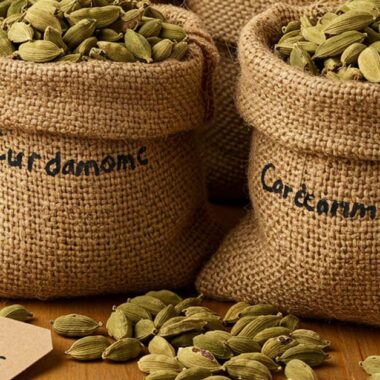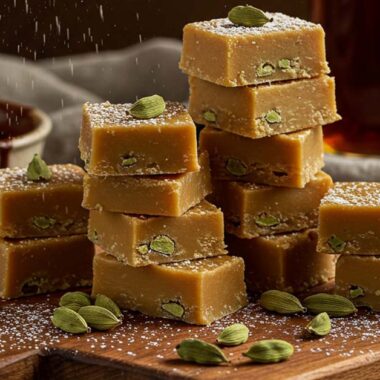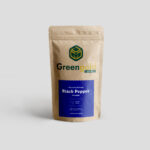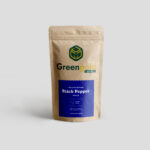When it comes to spices, cardamom and star anise are two popular and flavorful options that often find their way into both sweet and savory dishes. Although they may seem similar in their aromatic qualities, they have distinct flavors and uses that can completely change the character of your dish! 🤔 So, let’s break down the differences and help you decide when to use each! 🌟
What is Cardamom? 🌿
Cardamom is a seed pod from the Elettaria cardamomum plant, known for its warm, spicy, and slightly sweet flavor. It’s often described as having a complex flavor profile with hints of citrus, mint, and eucalyptus, making it a versatile ingredient for both sweet and savory recipes.
Flavor Profile of Cardamom:
- Warm and spicy, with a slight sweetness.
- Citrusy with hints of mint.
- Has a refreshing aftertaste with a bit of warmth.
Common Uses of Cardamom:
- Baked goods (like cardamom buns or chai-flavored desserts).
- Spiced teas (such as masala chai).
- Curries, rice dishes, and stews.
- Sweet treats like cardamom-infused ice cream or cookies. 🍪🍧
What is Star Anise? ⭐
Star anise is a star-shaped spice that comes from the Illicium verum plant. It has a distinct and strong flavor, primarily known for its licorice-like taste. Star anise also has a sweet and warm profile, but it’s more potent than cardamom and leans more toward a spicy licorice flavor. It’s used widely in Chinese, Indian, and Vietnamese cuisines, adding depth and warmth to many dishes.
Flavor Profile of Star Anise:
- Licorice-like taste with sweet and spicy undertones.
- Has a strong flavor, which is more pungent compared to cardamom.
- Warm and earthy, with a slight bitterness.
Common Uses of Star Anise:
- Chinese five-spice powder.
- Soups, stews, and broths.
- Pho, mulled wine, and spiced cider.
- Indian biryanis and curries.
- Baked goods and desserts with a touch of exotic flavor. 🍷🍲
When to Use Cardamom vs. Star Anise 🧑🍳
Use Cardamom When:
- You want a sweet, fragrant, and slightly spicy flavor in both sweet and savory dishes.
- You’re making spiced tea (especially masala chai) or baked goods with citrusy undertones.
- You want to add a refreshing element to curries or rice dishes without overwhelming the dish’s overall flavor.
- You’re preparing desserts like cookies, cakes, or ice creams that need a warm, aromatic boost.
Use Star Anise When:
- You’re making a dish that requires a stronger, licorice-like flavor (such as Chinese, Vietnamese, or Indian stews and curries).
- You’re preparing spiced beverages like mulled wine, spiced cider, or a rich broth.
- You want to add a bold, warm element to sauces, soups, or marinades.
- You’re preparing baked goods like breads or cookies that need an exotic, earthy twist.
Health Benefits of Cardamom and Star Anise 🌿💪
- Cardamom is rich in antioxidants, promotes digestion, and has anti-inflammatory properties. It also helps in detoxification, freshens breath, and can relieve stress. 🧘♀️💚
- Star Anise is known for its antibacterial, antifungal, and antioxidant properties. It can help with digestive health, boost immunity, and relieve coughs and cold symptoms. 🌟🌱
Key Differences Between Cardamom and Star Anise:
| Feature | Cardamom | Star Anise |
|---|---|---|
| Flavor | Warm, spicy, slightly sweet | Licorice-like, spicy, earthy |
| Strength of Flavor | Moderate | Strong and pungent |
| Common Uses | Baked goods, tea, curries | Soups, broths, mulled wine |
| Health Benefits | Aids digestion, detoxifies, reduces stress | Boosts immunity, eases coughs |
| Culinary Region | Indian, Middle Eastern, European | Chinese, Vietnamese, Indian |
Conclusion ✨
Both cardamom and star anise are incredible spices that each bring their own unique flavor profiles and health benefits. When deciding between the two, consider the dish you’re making and whether you want a spicy, refreshing kick (cardamom) or a bold, licorice-like warmth (star anise).
Both spices are highly versatile and can elevate any dish when used properly! 🌟













